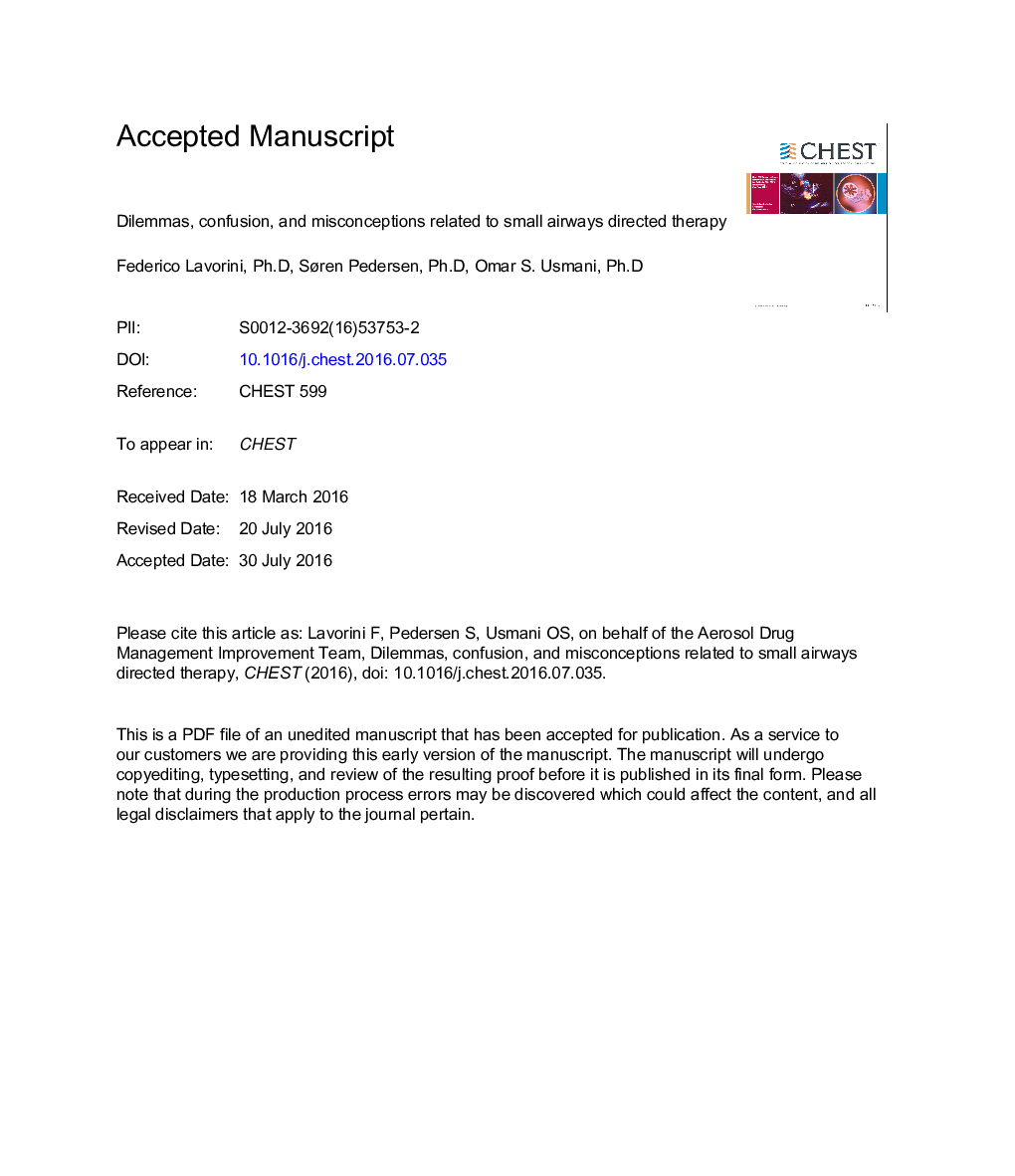| Article ID | Journal | Published Year | Pages | File Type |
|---|---|---|---|---|
| 5600465 | Chest | 2017 | 37 Pages |
Abstract
During the past decade, there has been increasing evidence that the small airways (ie, airways < 2 mm in internal diameter) contribute substantially to the pathophysiologic and clinical expression of asthma and COPD. The increased interest in small airways is, at least in part, a result of innovation in small-particle aerosol formulations that better target the distal lung and also advanced physiologic methods of assessing small airway responses. Increasing the precision of drug deposition may improve targeting of specific diseases or receptor locations, decrease airway drug exposure and adverse effects, and thereby increase the efficiency and effectiveness of inhaled drug delivery. The availability of small-particle aerosols of corticosteroids, bronchodilators, or their combination enables a higher total lung deposition and better peripheral lung penetration and provides added clinical benefit, compared with large-particle aerosol treatment. However, a number of questions remain unanswered about the pragmatic approach relevant for clinicians to consider the role of small airways directed therapy in the day-to-day management of asthma and COPD. We thus have tried to clarify the dilemmas, confusion, and misconceptions related to small airways directed therapy. To this end, we have reviewed all studies on small-particle aerosol therapy systematically to address the dilemmas, confusion, and misconceptions related to small airways directed therapy.
Keywords
ICSValved holding chamberHFAvHCBDPGSDCFCpMDIMMADDPIAerosolsAsthmaInhalersgeometric standard deviationCOPDBeclomethasone dipropionateSmall particlesSmall airwaysLABAPressurized metered-dose inhalerMass median aerodynamic diameterHydrofluoroalkaneDry powder inhalerchlorofluorocarbonInhaled corticosteroid
Related Topics
Health Sciences
Medicine and Dentistry
Cardiology and Cardiovascular Medicine
Authors
Federico MD, PhD, Søren MD, PhD, Omar S. MBBS, PhD,
